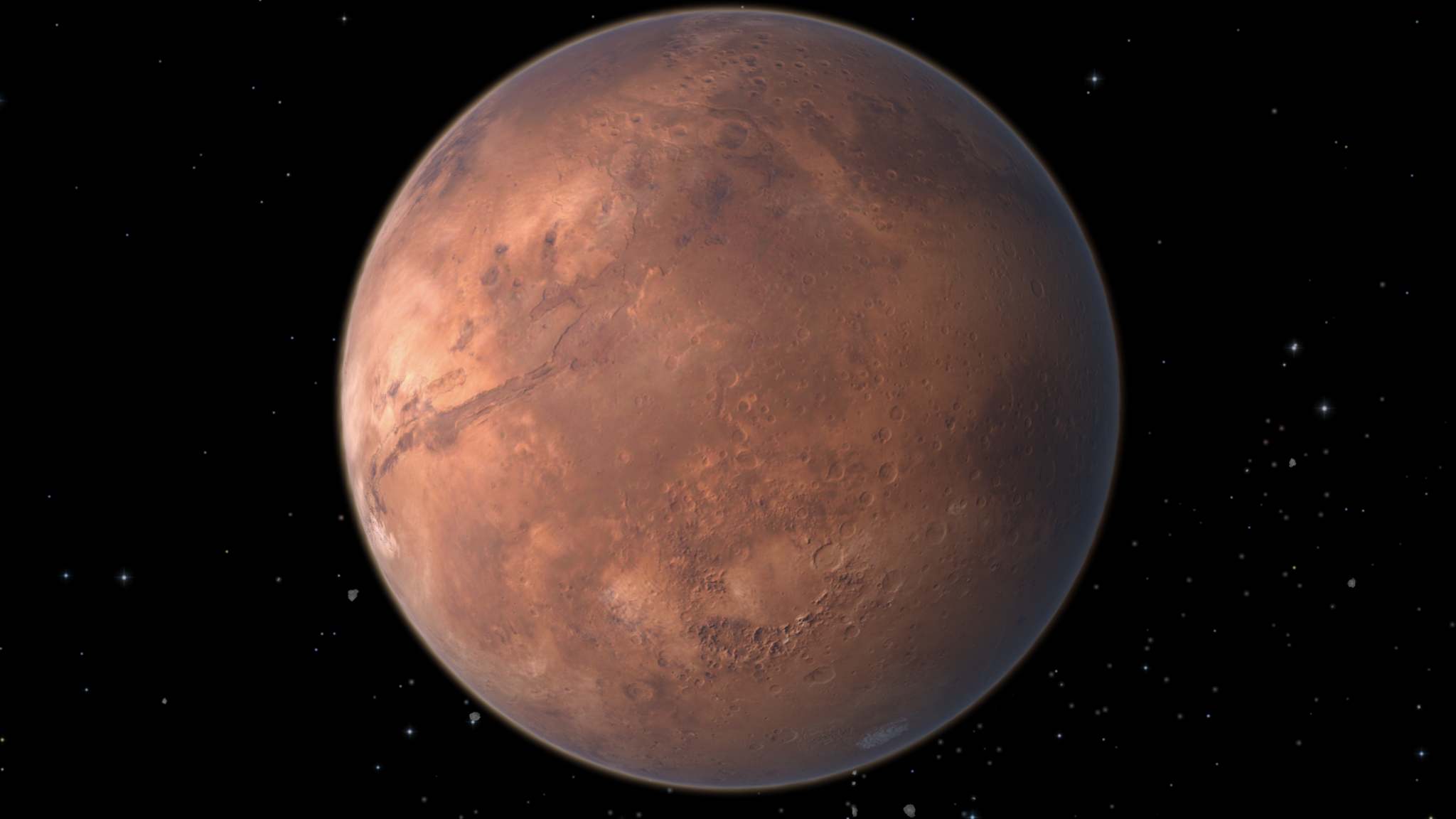A Global Dust Storm on Mars
Mars is that crazy-bright red object shining over the southeastern horizon after it rises in the late evening. It will reach its highest position, over the southern horizon, around 2:30 am local time.
A small telescope should already be able to reveal some variations in brightness on its disk, although a global dust storm has enveloped the planet — hiding all but the major features. Roger Venable, coordinator of the Association of Lunar and Planetary Observers (ALPO) Mars Section, describes the current storm as "unique in the history of observed Martian dust storms."
Though sometimes compared to the 2001 global storm, that event occurred closer to the start of Martian summer and in a more traditional location, the familiar tempest-breeding grounds of Hellas Basin in Mars's southern hemisphere. The current global storm took shape in the northern hemisphere and much earlier than usual, only nine days in southern hemisphere spring.
Mars will be rising about 5 minutes earlier every night for the next couple of weeks because the Earth is starting to pass the planet on the “inside track”. Closest approach to the Earth occurs on July 31, when it will be only 0.385 astronomical units (35.79 million miles or 57.6 million km) from the Earth. That translates to only 3 minutes and 18 seconds for radio signals to reach the planet. It won’t be this close again until 2035!
